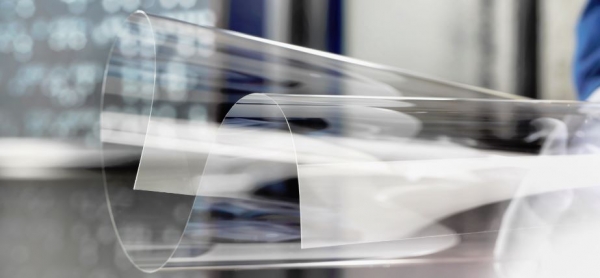
Despite the fact that plastics were adopted as the cover window for the foldable smartphones to be mass produced for the first time this year, the glass industry expects that it is highly likely that the material will be switched to glass. It is based on the determination that glass is better than plastic in almost all aspects including transparency, touch, and prevention of whitening if the fatal disadvantage of breakage can be prevented.
According to the industry on the 5th, the first mass production smartphone cover window was made of polyimide (PI), a kind of plastic. The glass industry, however, expects it to be replaced by glass in a few years. The display cover window of Samsung Electronics' first mass-production foldable-type smartphone will be supplied by Sumitomo Chemical of Japan.
Corning, an American glass manufacturer, said, "When Apple first put out the iPhone, a plastic cover window was used but was soon replaced with glass. The replacement is expected in a couple of years or even early next year at the earliest.”
Corning is currently in an unparalleled position in the display industry. According to market researcher IHS Markets, last year, Corning's share of the glass substrate market was 46%. Following Corning, Japan's Asahi Glass (AGC) and Nippon Electric Glass Co., Ltd. (NEG) accounted for 25% and 23%, respectively.
Two sheets of the substrate glass are used to manufacture liquid crystal display (LCD) panels. For organic light emitting diodes (OLEDs), two are used for rigid OLEDs and one is used for flexible OLEDs. Flexible OLEDs use PI rather than glass as a substrate, where the glass is taken off at the end of the process after serving as a carrier for PI formation.
Last year, Corning built its 10.5 generation substrate glass factory in Hefei, Anhui province, China, and started the operation. The second 10.5-generation substrate glass factory is now being constructed in Wuhan City, Hubei Province. It is to supply the 10.5 generation LCD production lines of China's largest display maker BOE. It is expected that Corning's market share in the glass substrate market will increase further.
While the substrate glass is related to the display component level, the front cover window is the outline of the finished product. Currently, almost every smartphone has a glass cover window. The number of smartphone models that use glass for the rear surface has increased due to the wireless charging. In this type of cover window market, Corning has a higher market share than they have in the market for substrate glass.
If display companies adopt glass as a cover window material, Corning is expected to continue to dominate its existing influence over the cover window market.
The competition among glassmakers is also expected to increase beyond the competition between PI and glass materials. Schott, Germany, has been more prolific in the pharmaceuticals and household appliances market than in the display industry. It has the largest market share in tubing glass used in the pharmaceuticals and in the market for electric oven top glass. In displays, the company has been increasing its supply from the glass for fingerprint recognition and camera module cover to the cover window for smartphones and car displays in recent years.
An official of Schott said, “The luxury of the glass is better suited for the top-of-the-line foldable smartphones. Also, glass is better in practical use in terms of sensitivity and response speed of touch sensors." In 2016, Schott received the “German Industrial Innovation Award” with its ultra-thin glass.
Similar to the selection of Sumitomo Chemical's PI for Samsung Electronics' first mass-production foldable smartphone, Japanese glass makers such as AGC and NEG are also expected to prepare products that match their reputation of being the 'materials powerhouse'.

